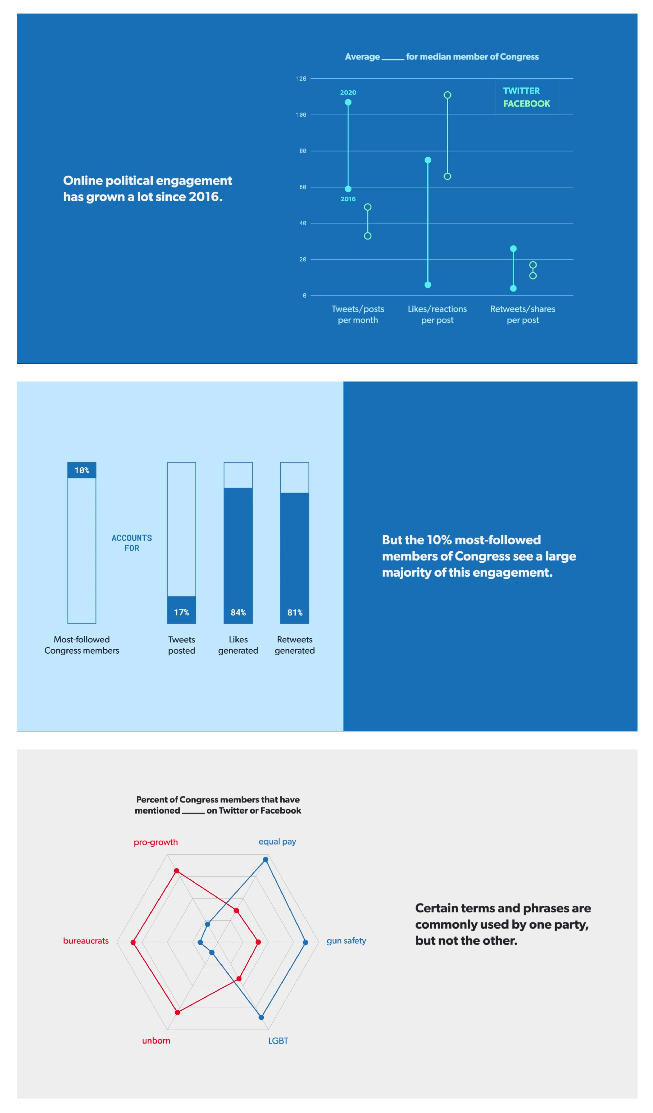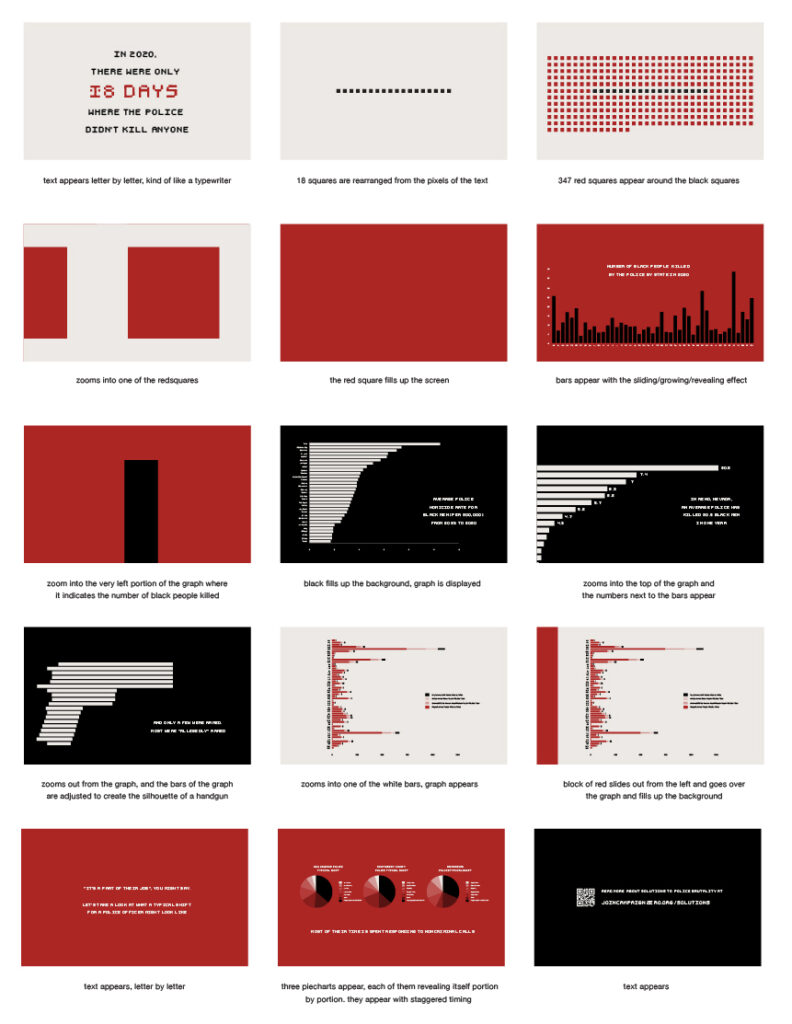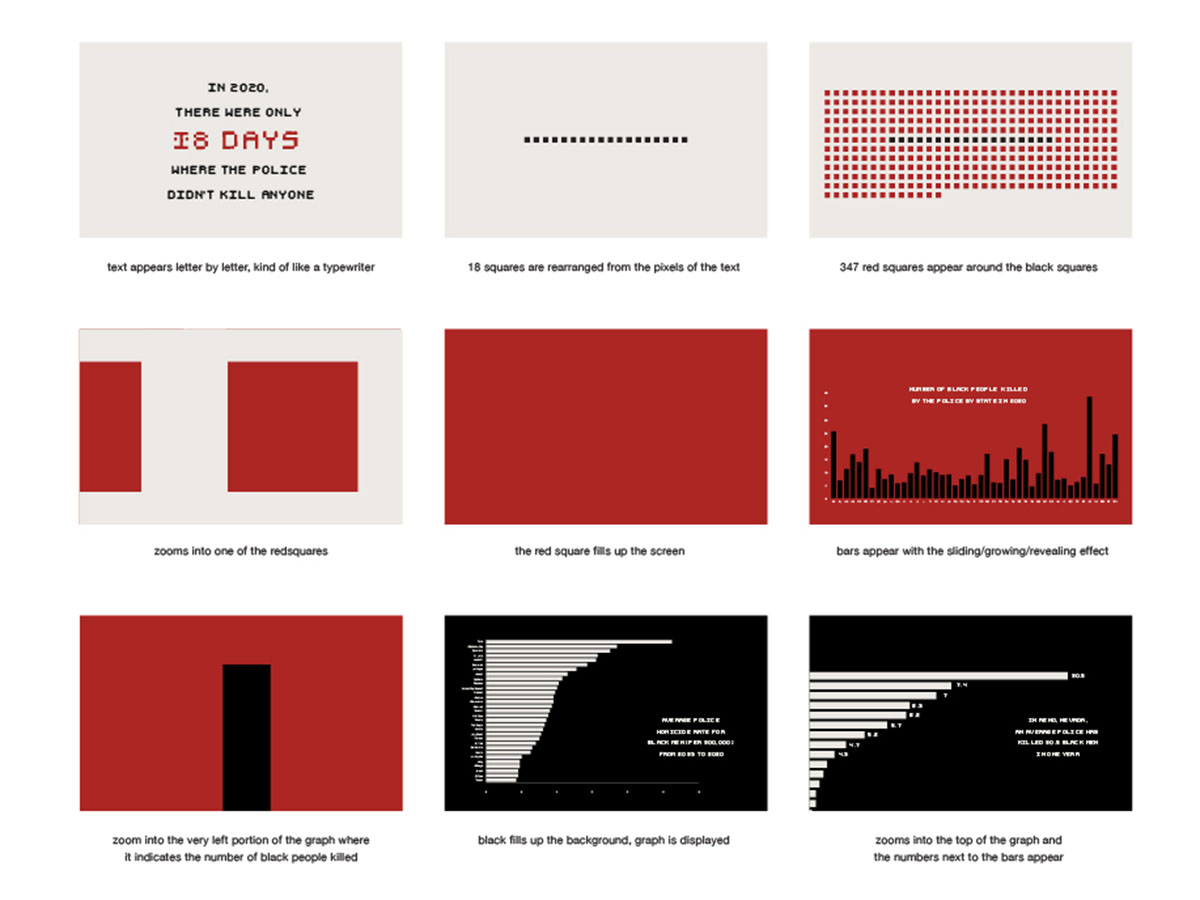Eugene Park
Associate Professor
University of Minnesota, Twin Cities
This paper proposes a forward-thinking pedagogical approach that brings motion graphics into the practice of data visualization within a graphic design studio classroom. The intention behind this pedagogical approach is to address the need to effectively communicate complex data through visual narratives that enriches design research and practice with data literacy and storytelling.
At the heart of this exploration is a case study that tasked junior and senior graphic design students with creating a one minute video to explain a selected topic. Students had to utilize open source data published by government agencies and nonprofits. By working with these datasets, they were trained in preparing the dataset through cleaning and enriching it with other relevant metadata to enhance their intended narrative. In addition to using common analysis tools like Tableau, machine learning algorithms written in Python were also utilized for specialized datasets (i.e. textual data).
After the analysis stage, students proceeded to storyboard their animations using the graphs they generated. Along the way, they were challenged to design their scenes with the text-to-graph relationships in mind, and strategically plan out their scenes to optimize information retention and minimize cognitive overload. Afterwards, the final animations were created using After Effects. Due to the focus on the analysis, visualization, and animation, there wasn’t time to explore how sound can enhance the animated experience.
This project challenges graphic design students to engage in statistical analysis and apply dual-coding theory where both written text and accompanying images are utilized in creating an explanatory visualization. It also equips students with the skills and insights necessary to create clear, engaging, and informative visual narratives with both traditional practices and modern design tools. Ultimately, this reinforces the importance of graphic designers to expand visual communication beyond the static mediums in order to make complex information accessible.


This design research is presented at Design Incubation Colloquium 10.3: Tenth Anniversary, St. John’s University (Hybrid) on Friday, June 7, 2024.
